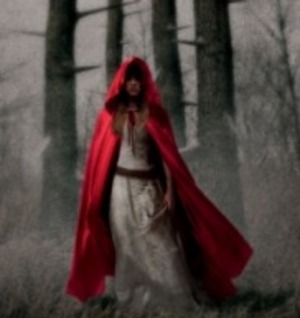The werewolf has been a fixture of folklore and mythology since ancient times. Sometimes called lycanthrope or shape-shifters, they often represent the duality of humans as both intellect and beast.
The earliest werewolf appearance in film history is the noted 1913 silent film, “The Werewolf.” All prints of the film were sadly destroyed in a fire 10 years after it was produced, which was common in the time of nitrocellulose film. The Werewolf” follows the traditional Native American folklore of a Navajo witch’s daughter who becomes a shape-shifter. She sinks her teeth into some vengeance against early western settlers.
Most werewolves in early films were shape-shifters who effortlessly transitioned from human to wolf. Most people had not seen the horrifically painful man-to-beast transformation until the 1941 classic “The Wolf Man,” starring Lon Chaney, Jr. Though, the same iconic makeup artist, Jack Pierce, had laid his roots for the Wolf Man in the 1935 film, “Werewolf of London.” The film is noted as the first Hollywood werewolf movie and the first time a bi-pedal werewolf terrorized the screen.
Jack Pierce actually crafted the full Wolf Man mask, but “Werewolf of London” star Henry Hull refused to undergo hours of makeup. Lon Chaney, Jr. took the challenge as an actor and became the most familiar werewolf in film history.
After Lon Chaney, Jr. in “The Wolf Man”, the beast was more bark than bite on the big screen. Most depictions of werewolves were nonsensical, un-imaginative spin-offs of “The Wolf Man.” This all changed 40 years later with Joe Dante’s “The Howling”, with a screenplay by John Sayles and game changing special effects from Rob Bottin.
Werewolf films in the 1980s were all about the transformation. The same year that “The Howling” released, John Landis came out with his “An American Werewolf in London.” Makeup and effects artist Rick Baker left the production of the “Howling” in order to work on “An American Werewolf in London.” It was Baker’s makeup that roused up the Academy Awards to start the Best Makeup category, giving him the inaugural award for “An American Werewolf in London.
Both films had completely reinvigorated the werewolf film with their special effects, but also by comically referencing werewolf films of the past. At the same time, these innovative films finally brought werewolves up to speed with modern horror, scaring audiences out of their skin. The only 2 werewolf films on Total Film’s “50 Greatest Horror Movies of All Time” are “An American Werewolf in London” and “The Howling.
1981 was the year of the werewolf in movies, as the film “Wolfen” was also released. “Wolfen” was notable for being a first in horror movies to put the camera behind the mask for a werewolf POV shot using thermal imaging effects.
Several great werewolf films continued to be produced in the 80s, including Neil Jordan’s “The Company of Wolves” and the Stephan King adaptation “Silver Bullet.” Though, after Michael J. Fox in “Teen Wolf”, audiences had a hard time taking werewolf films seriously. Especially since Rick Baker and Rob Bottin had raised the bar substantially for werewolf transformations.
This was until director Mike Nichols and Jack Nicholson decided to bring back the full moon. With the 1994 film “Wolf,” they delved into the psychological metaphor of the Wolf Man and paid homage to the classic werewolf film. It stands alone in the decade of the 90s, amongst continually clichéd werewolf movies.
2000 gave rise to a new generation of horror films, bringing not only one of the best werewolf films, but horror films of recent times. John Fawcett’s direction of Karen Walton’s screenplay for “Ginger Snaps” totally revamped the werewolf film. Unlike the self-mocking, vet visually stunning innovations of 1981, “Ginger Snaps” gathered a cult following by re-imagining werewolf metaphors.
Neil Marshall also breathed new life into werewolf films in 2002 with “Dog Soldiers.” It was one of the last great definitive werewolf films, as werewolves regressed into side-characters in franchised muck. Werewolves appeared in the “Underworld” series, “Harry Potter” movies and the “Twilight Saga,” often playing second fiddle to Vampires.
Where 2000 started off with “Ginger Snaps,” this completely original turn ended with homage again in 2010 with “The Wolfman.” This remake of the original 1941 “The Wolf Man” carried masterful acting and was the second werewolf film to win the Academy Award for Best Makeup.
With the upcoming “Red Riding Hood” film, we are left wondering whether it will transcend accepted werewolf clichés. The film’s darker tone promises something truer to werewolf mythology and finally immerses Red Riding Hood’s folk tale in the werewolf legend. That said; it has a lot to live up to in nearly a century of werewolf film history.



